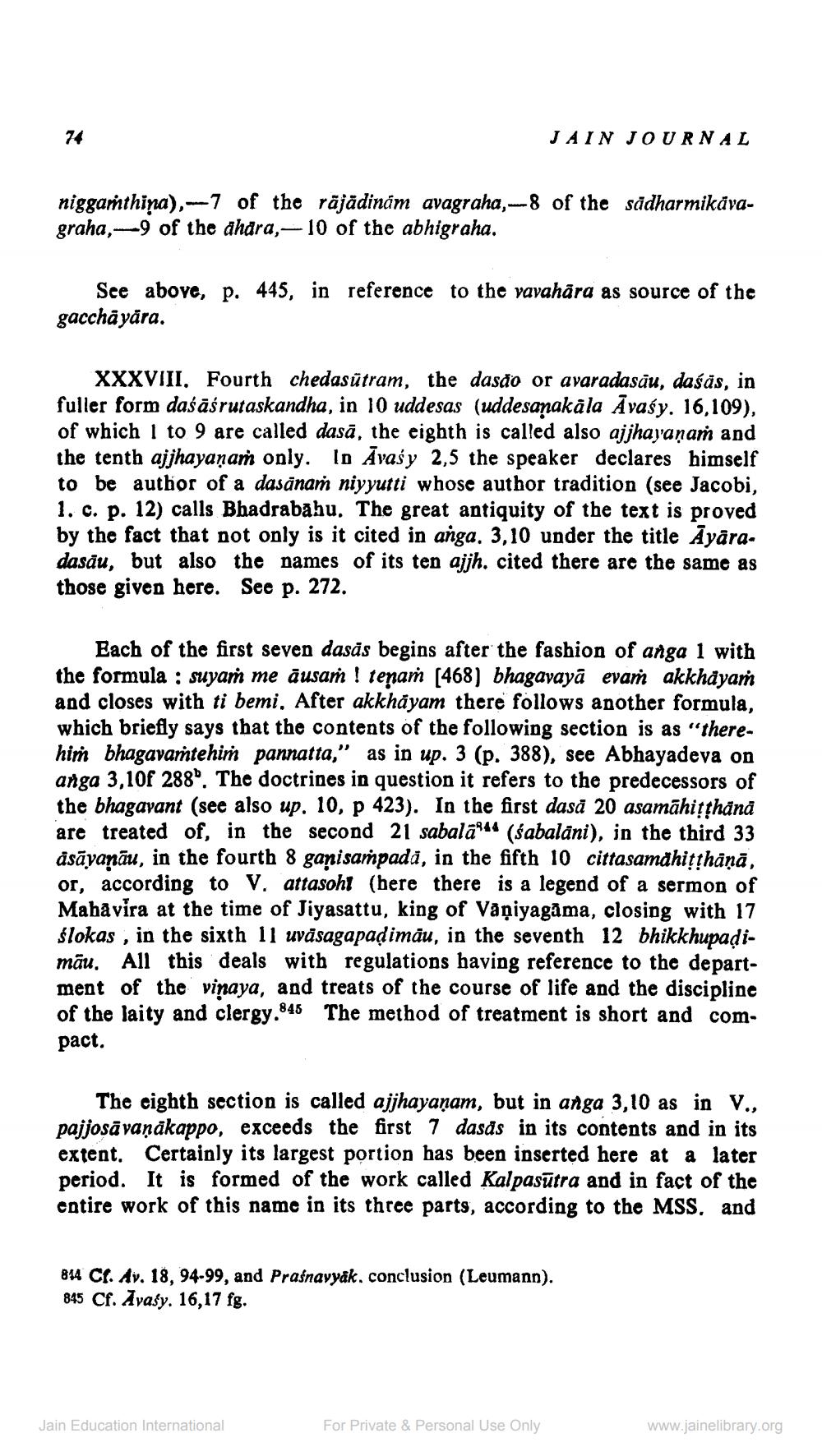________________
JAIN JOURNAL
niggarthina),-7 of the rājādinám avagraha.--8 of the sadharmikavagraha, -9 of the ahara,- 10 of the abhigraha.
See above, p. 445, in reference to the vavahāra as source of the gacchåyåra.
XXXVIII. Fourth chedasūtram, the dasão or avaradasāu, daśas, in fuller form daśāśrutaskandha, in 10 uddesas (uddesanakala Āvasy. 16,109), of which I to 9 are called dasā, the eighth is called also ajjhayaņaṁ and the tenth ajjhayaņaṁ only. In Āvas y 2,5 the speaker declares himself to be author of a dasānań niyyutti whose author tradition (see Jacobi, 1. c. p. 12) calls Bhadrabahu. The great antiquity of the text is proved by the fact that not only is it cited in anga. 3,10 under the title Āyāra. dasău, but also the names of its ten ajjh. cited there are the same as those given here. See p. 272.
Each of the first seven dasás begins after the fashion of anga 1 with the formula : suyaṁ me ausam ! tenaṁ (468) bhagavayā evaṁ akkhayam and closes with ti bemi, After akkhayam there follows another formula, which briefly says that the contents of the following section is as "therehim bhagavartehiṁ pannatta," as in up. 3 (p. 388), see Abhayadeva on anga 3,10f 2886. The doctrines in question it refers to the predecessors of the bhagavant (see also up. 10, p 423). In the first dasă 20 asamāhitthână are treated of, in the second 21 sabalā 44 (sabalani), in the third 33 asāyanāu, in the fourth 8 ganisaṁpadā, in the fifth 10 cittasamahitphâņā, or, according to V. attasoht (here there is a legend of a sermon of Mabăvira at the time of Jiyasattu, king of Vāņiyagāma, closing with 17 ślokas , in the sixth 11 uvasagapadimāu, in the seventh 12 bhikkhupadimõu. All this deals with regulations having reference to the department of the vinaya, and treats of the course of life and the discipline of the laity and clergy.846 The method of treatment is short and compact.
The eighth section is called ajjhayaņam, but in anga 3,10 as in V., pajjosā vaņākappo, exceeds the first 7 dasds in its contents and in its extent. Certainly its largest portion has been inserted here at a later period. It is formed of the work called Kalpasūtra and in fact of the entire work of this name in its three parts, according to the MSS. and
814 Cf. Ay, 18, 94-99, and Prašnavyák, conclusion (Leumann). 845 Cf. Ayasy. 16,17 fg.
Jain Education International
For Private & Personal Use Only
www.jainelibrary.org




